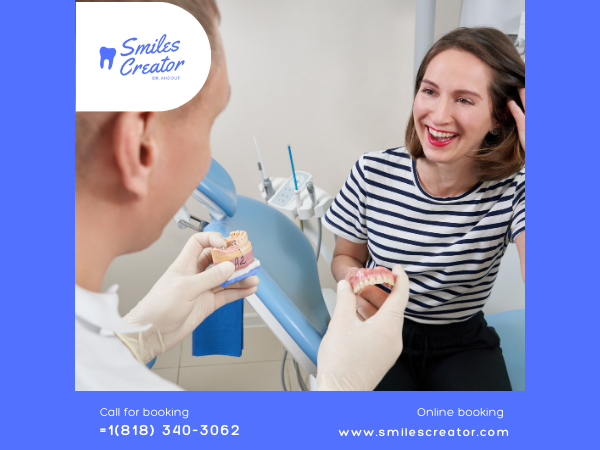For many individuals, visiting the dentist can trigger feelings of anxiety and fear. These emotions can be particularly overwhelming for those who require extensive dental treatments or have had traumatic dental experiences in the past. Fortunately, sedation dentistry offers a safe and effective solution for managing dental anxiety and ensuring a comfortable experience. In this article, we will delve into the science behind sedation dentistry, shedding light on how it works and how Smiles Creator by Dr. Ahdout incorporates it to create a relaxing and stress-free dental journey.
- What is Sedation Dentistry?
Sedation dentistry involves the use of medication to help patients relax and remain calm during dental procedures. It is commonly used for individuals with dental anxiety, sensitive gag reflexes, low pain tolerance, or those requiring lengthy or complex treatments. At Smiles Creator by Dr. Ahdout, sedation dentistry is offered to enhance patient comfort and ensure a positive dental experience.
- The Different Levels of Sedation:
Sedation dentistry provides various levels of relaxation, tailored to meet the unique needs of each patient. The different levels of sedation include:
- Minimal Sedation: The patient remains awake and alert but feels relaxed during the procedure.
- Moderate Sedation (Conscious Sedation): The patient is conscious but may not remember much of the procedure and may experience slurred speech.
- Deep Sedation: The patient is on the edge of consciousness but can be awakened easily if needed.
- General Anesthesia: The patient is completely unconscious during the procedure.
At Smiles Creator, Dr. Ahdout and the dental team carefully assess the patient’s medical history and anxiety levels to determine the appropriate level of sedation for each case.
- Administration of Sedation:
Sedation in dentistry can be administered through various methods:
- Inhalation: Nitrous oxide, commonly known as laughing gas, is inhaled through a mask to induce a relaxed state. It is often used for mild to moderate sedation.
- Oral Sedation: Medication in the form of a pill or liquid is taken orally before the procedure to induce relaxation.
- Intravenous (IV) Sedation: Medication is administered directly into the bloodstream through an IV for deeper sedation.
- Deep Sedation and General Anesthesia: These require specialized training and are administered by an anesthesiologist in a controlled environment.
Dr. Ahdout and the team at Smiles Creator prioritize patient safety and comfort, ensuring that sedation is administered and monitored with utmost care.
- The Benefits of Sedation Dentistry:
Sedation dentistry offers numerous benefits, including:
- Reduced anxiety and fear: Sedation helps patients feel at ease, making dental visits more comfortable.
- Enhanced pain management: Sedation can minimize pain sensations during procedures, particularly for more invasive treatments.
- Increased cooperation: Patients who experience dental anxiety may find it challenging to cooperate during treatments. Sedation allows for a smoother and more productive dental experience.
Sedation dentistry has revolutionized the dental experience for many patients, providing a relaxed and stress-free way to undergo necessary treatments. At Smiles Creator by Dr. Ahdout, the science behind sedation dentistry is harnessed to ensure every patient’s comfort and well-being. By offering various levels of sedation, Dr. Ahdout and the dental team strive to create a positive dental journey for each individual, addressing dental anxiety and providing personalized care. If you or a loved one experience dental fear or anxiety, consider exploring the benefits of sedation dentistry at Smiles Creator, where your dental health and comfort are always the top priority.
Is Sedation Dentistry Safe? Exploring the Benefits and Risks

